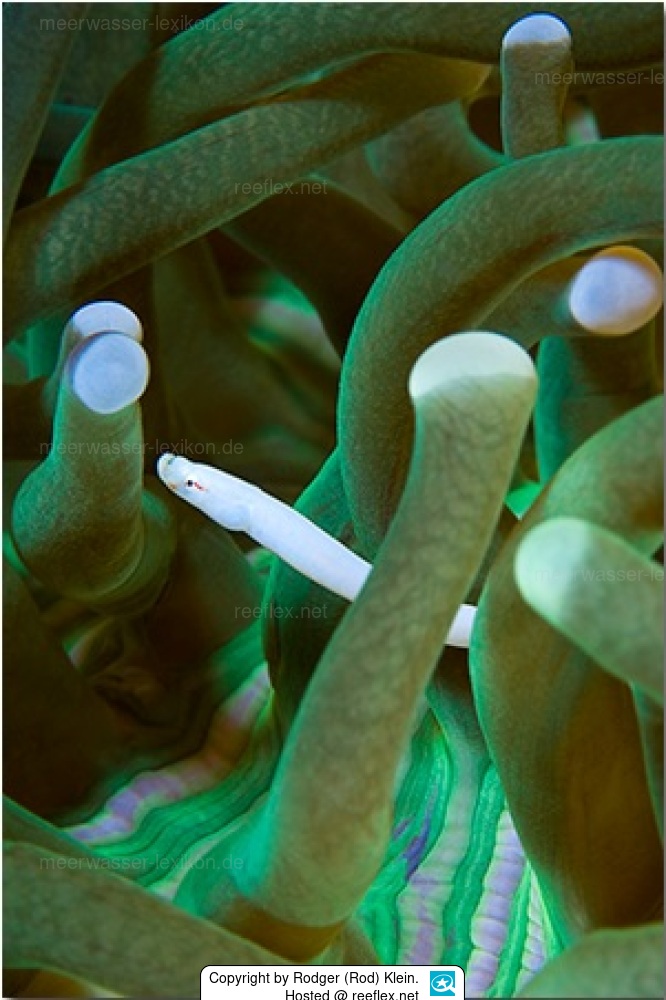Info
Cosmocampus darrosanus (Dawson & Randall, 1975)
Sincere thanks to Rogder (Rod) Klein, Artist/Writer, for his photo of Cosmocampus darrosanus taken at the Philippines!
Cosmocampus darrosanus belong to a genus which is poorly known. Distributed in the Indo-Pacific from the east coast of Africa to the northern coast of Australia, is found in Guam as well. Adults inhabit coral reef flats at depths of less than 3 m.
Cosmocampus darrosanus has a rigid body, black colour with white high forehead and white snout. Easy to identify by shape and colour of the forehead and snout. Ovoviviparous, the male carries the eggs in a brood pouch which is found under the tail.
Class: Actinopterygii
Order: Syngnathiformes
Family: Syngnathidae
Species: Cosmocampus darrosanus
hma
Feeding intake.
The fish take a long time to eat at the beginning, before the food is taken up, a close inspection is carried out. After acclimatisation, the offered frozen food is eaten without problems. It should be noted that wild-caught fish behave differently than offspring when it comes to food intake. In the case of offspring, the size of the fish purchased also plays a role in the choice of food.
Sincere thanks to Rogder (Rod) Klein, Artist/Writer, for his photo of Cosmocampus darrosanus taken at the Philippines!
Cosmocampus darrosanus belong to a genus which is poorly known. Distributed in the Indo-Pacific from the east coast of Africa to the northern coast of Australia, is found in Guam as well. Adults inhabit coral reef flats at depths of less than 3 m.
Cosmocampus darrosanus has a rigid body, black colour with white high forehead and white snout. Easy to identify by shape and colour of the forehead and snout. Ovoviviparous, the male carries the eggs in a brood pouch which is found under the tail.
Class: Actinopterygii
Order: Syngnathiformes
Family: Syngnathidae
Species: Cosmocampus darrosanus
hma
Feeding intake.
The fish take a long time to eat at the beginning, before the food is taken up, a close inspection is carried out. After acclimatisation, the offered frozen food is eaten without problems. It should be noted that wild-caught fish behave differently than offspring when it comes to food intake. In the case of offspring, the size of the fish purchased also plays a role in the choice of food.







 Rodger (Rod) Klein
Rodger (Rod) Klein










